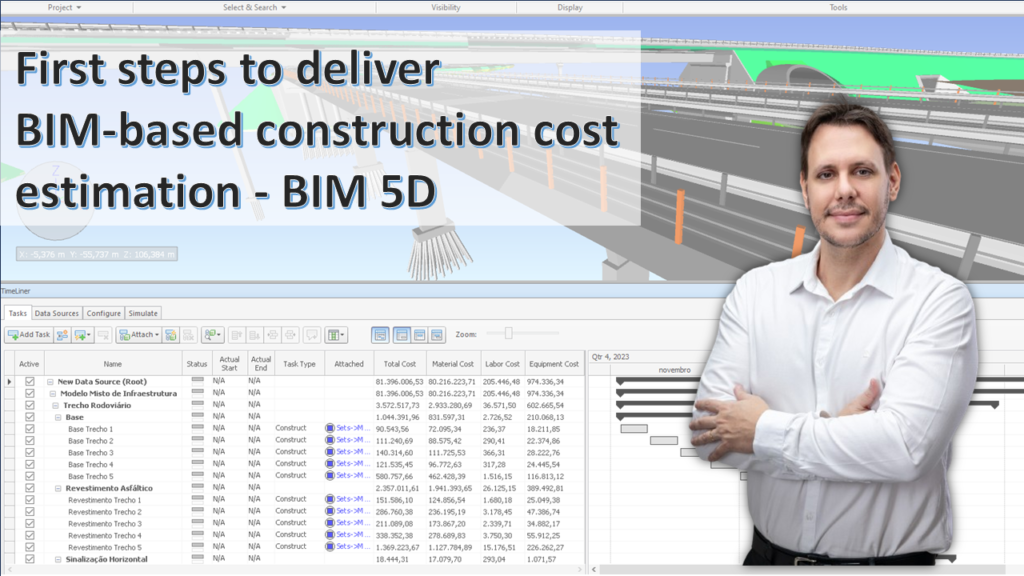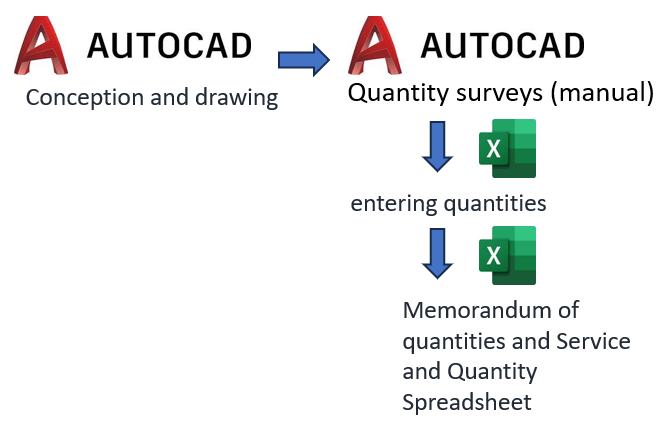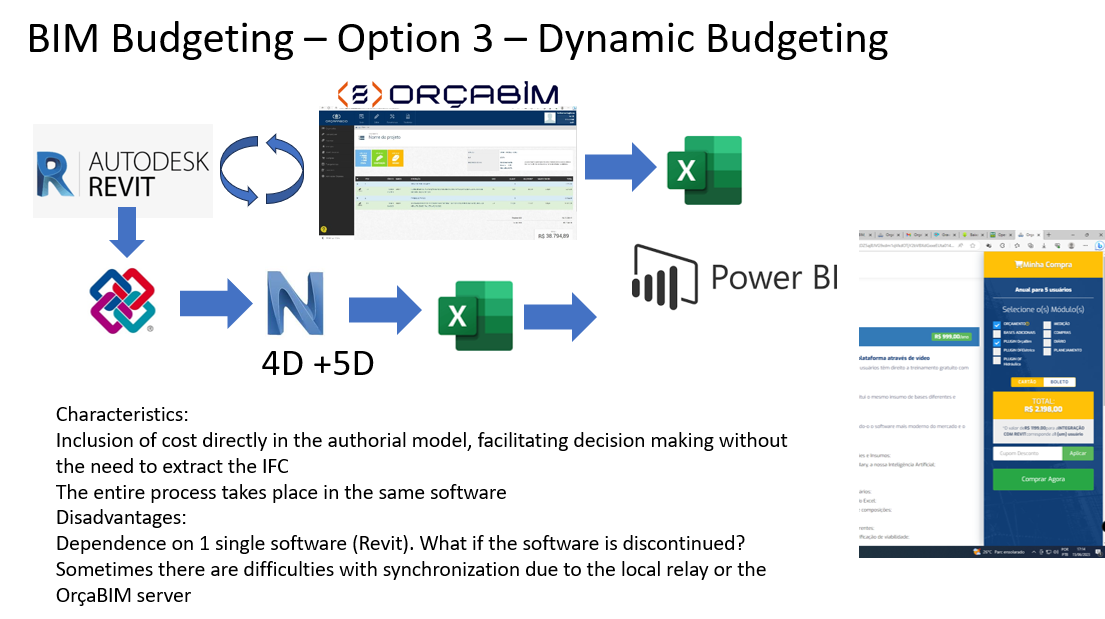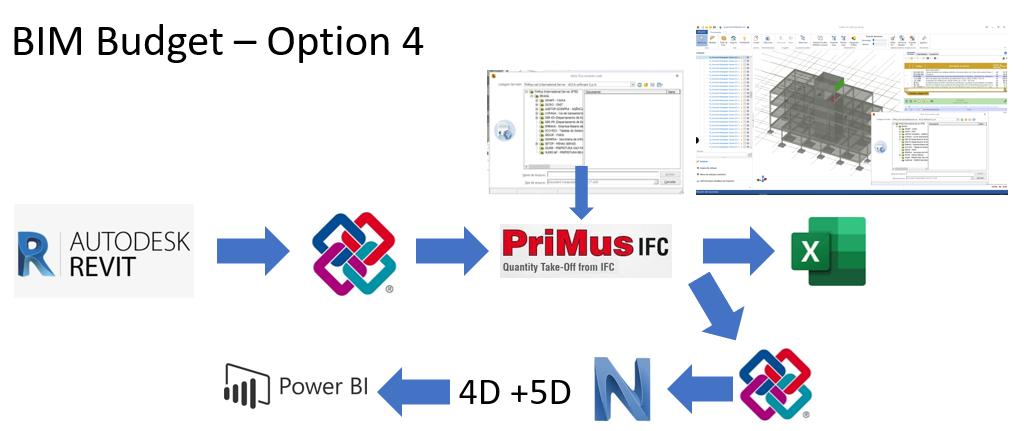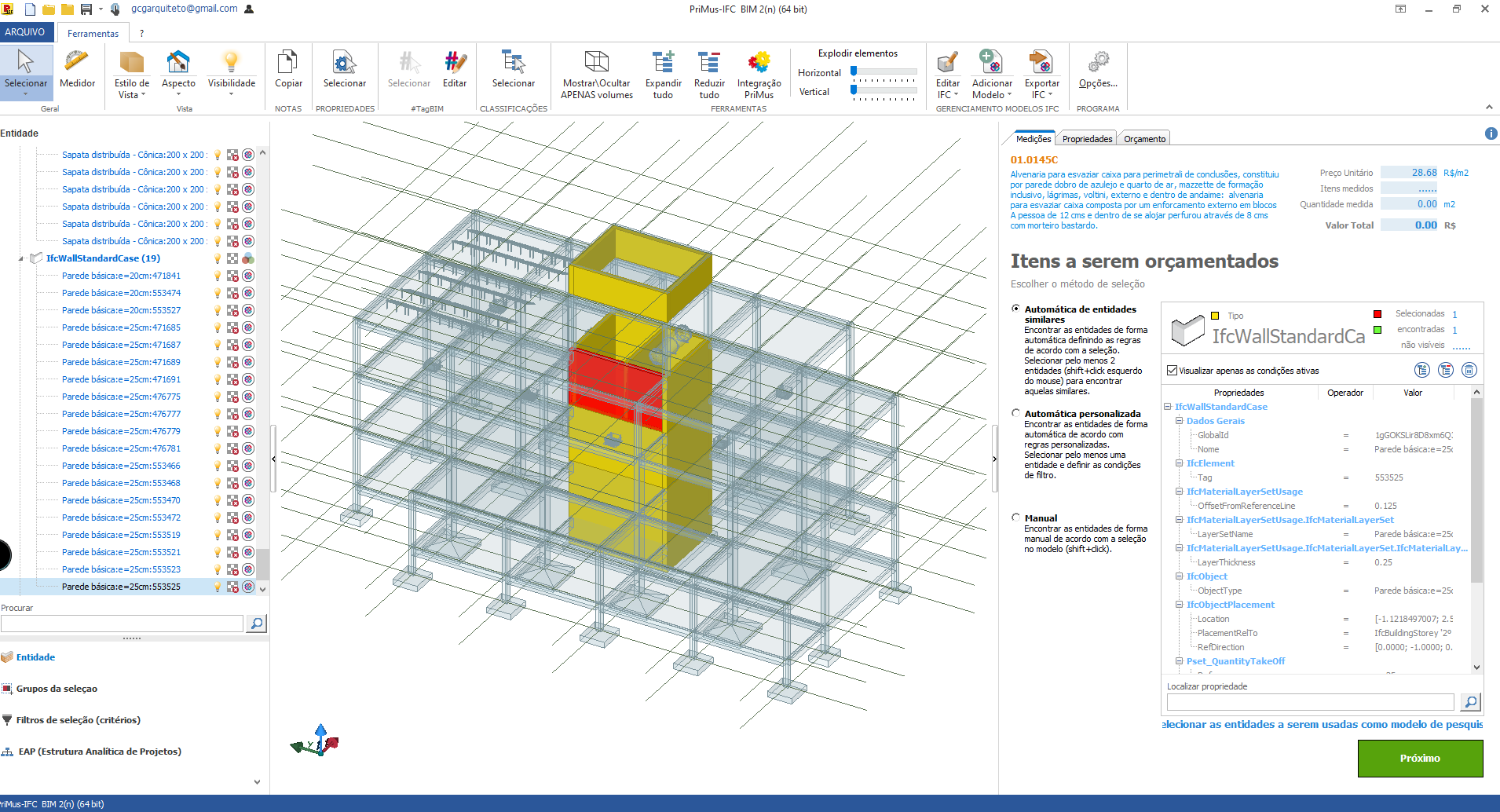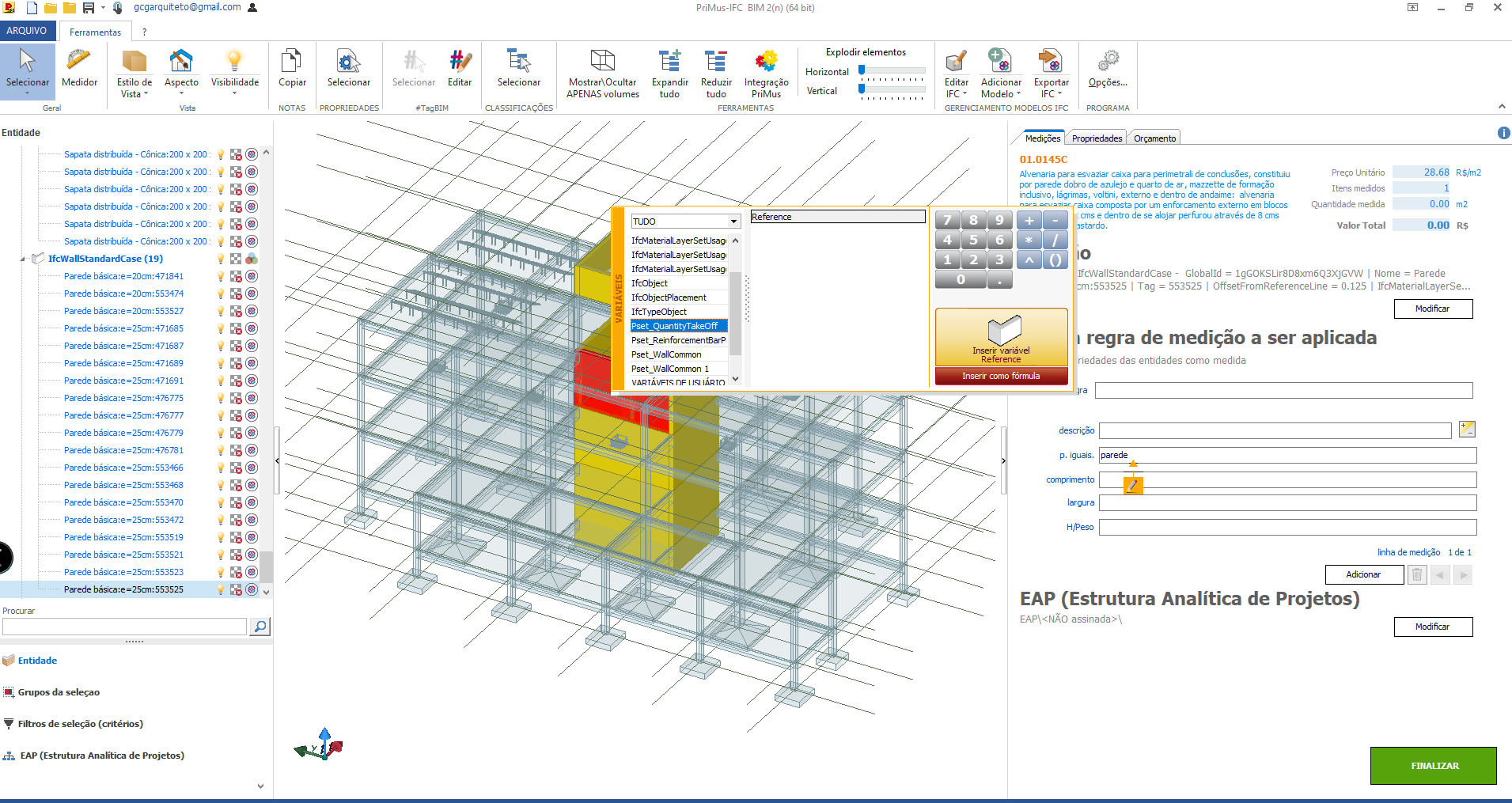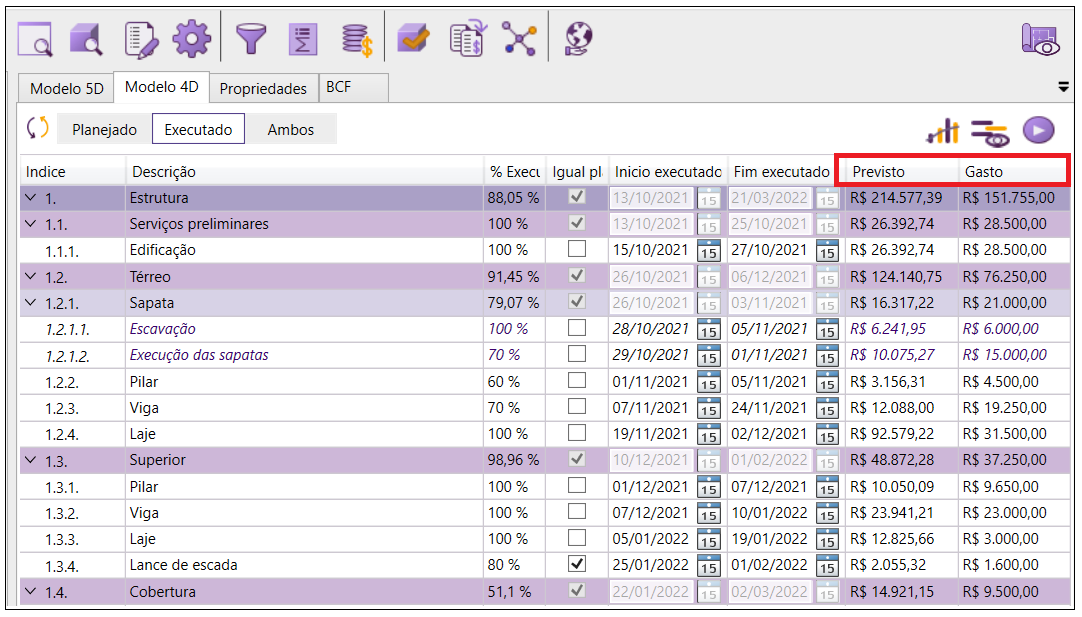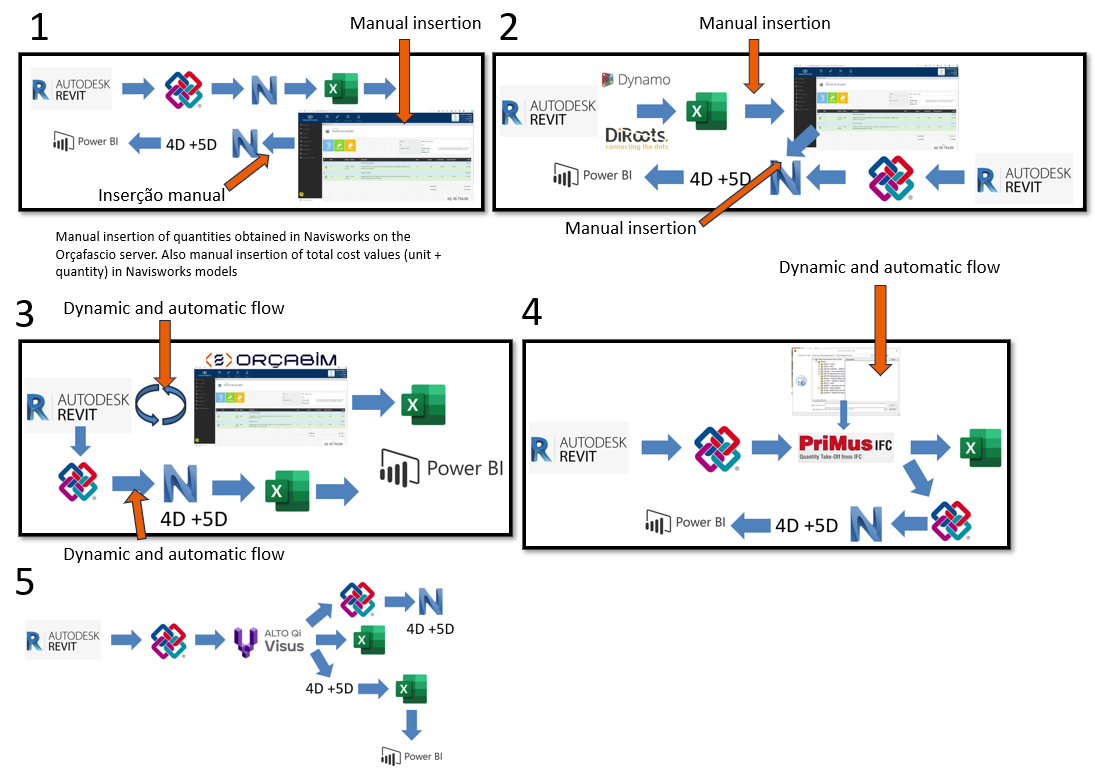There are still many doubts and myths regarding the topic of BIM-based construction cost estimation – BIM 5D. In this context, this article aims to clarify important points for the contracting and execution of BIM assets. It also includes 5 methods for developing BIM-based construction cost estimation – BIM 5D.
This post was written by BIM Corner’s Guest Author, Guilherme Guignone
Table of Contents
Defining BIM-based construction cost estimation - BIM 5D
The universe of use of the BIM methodology encompasses many references, both national and international. Something that must be standardized is the definition of nomenclatures of topics related to the use of the BIM methodology, aiming to increase assertiveness in discussions.
Some references I recommend are:
a) the BIM Dictionary, which can be accessed at: https://bimdictionary.com/
and
b) The U.S. General Services Administration dictionary, which can be accessed at: https://www.gsa.gov/real-estate/design-construction/3d4d-building-information-modeling/bim-guides/bim-guide- terminology/glossary-a-e
How does the BIM Dictionary approach the topic of BIM-based construction cost estimation – BIM 5D?
According to the Dictionary, we have:
“The fifth modelling dimension (5D) refers to 4D + cost. That is, a model (or modelling workflow) is considered to be 5D when cost is linked/embedded within BIModels and Model Components. 5D is used for the purposes of generating Cost Estimates and practicing Target Value Design”
It is interesting to highlight some points in this definition.
Initially, it is defined that BIM or BIM 5D must be added to the use of BIM 4D (planning and control of constructions). However, then in the same statement it is mentioned that it refers to a modeling workflow that the cost is linked/embedded in BIM Models and model components. Therefore, according to the definition, the use of 5D BIM should not necessarily be related to the use of 4D BIM, but rather that there should be a forecast of costs in the BIM workflow.
However, this issue is still not clear with this definition alone.
What does the U.S. General Services Administration say?
There is no definition of BIM 5D provided in the GSA documents.
What does Penn State University say?
It includes 2 important pieces of information on the subject.
The first information is that it considers BIM uses and BIM dimensions in the same way. In practice, there is no difference. According to Figure 1, for example, the planning and control of the execution of the construction is mentioned as 4D and the BIM 5D is mentioned only as cost estimates. Therefore, the terminology dimension and uses, in practice, are considered to be the same thing.
The second issue is the definition of BIM-based cost estimating, according to Penn State University:
“A process in which BIM can be used to assist in the generation of accurate quantity take-offs and cost estimates throughout the lifecycle of a project. This process allows the project team to see the cost effects of their changes, during all phases of the project, which can help curb excessive budget overruns due to project modifications.”
Once again, we have confirmation that BIM 5D corresponds to the use of cost information in the development of models, which can be used throughout the project life cycle to assist in decision making.
In this context, it is important to design process solutions and tools to adopt BIM 5D in the development of projects integrated into the model quality assurance strategy. This strategy is the responsibility of the BIM Coordinator in the projects, developing the BIM Execution Plans and monitoring their execution, and those who will prepare the project contracting notices.
It is necessary to include these determinations in the public notices for contracting engineering projects and/or in the Pre-Contract BIM Execution Plans so that the BIM use is covered correctly and the need to deliver this use to the Contractor and Contractor is clear.
Another fundamental observation is that, often, for example in Brazil, according to Decree 10,306 (2020), it is necessary to deliver two BIM uses together: BIM 4D and BIM 5D.
Therefore, even in accordance with the understanding that a project that needs to deliver BIM 5D should not be obliged to deliver, if not provided for in the Contract, planning and control of the execution of the construction based on BIM – BIM 4D, the Brazilian Decree requests that both BIM uses must be delivered.
It is important, in this context, to design tool and process strategies to integrate 4D and 5D BIM uses, whether integrated or used alone.
In short, if the notice only requests the delivery of 5D BIM it is not necessary to deliver the use of 4D BIM. If the delivery of both uses is contemplated in the public notice for contracting engineering projects, solutions must be incorporated to deliver both BIM uses.
The prominent question we have is how to execute these uses?
What are the possibilities today?
In this article, I highlighted 5 options for executing BIM-based construction cost estimation – BIM 5D.
I also highlight the characteristics, advantages and disadvantages of each one.
Budgeting adopting the CAD methodology
Initially, an example of budgeting using the CAD-based methodology will be presented. As an example, we can prepare projects in AutoCAD software, obtain the quantities by surveying vector elements in the software’s work plan, using lisp routines, and, after that, manually insert the quantities into xls spreadsheets.
In this process, the elements identified on the screen are not BIM objects, they are just points, lines, polygons and others. We also do not have the benefits related to the development of BIM projects based on processes, tools and people.
We have a laborious manual extraction with great potential for errors and, furthermore, we do not have cost information linked to the model components as premises for making design decisions.
Below are 5 ways to budget based on BIM. They all have in common that they contemplate ways to incorporate costs in the development process of BIM models, providing cost information to also be used for project decision-making, from its initial stages.
Also in common are strategies for developing 4D BIM linked to costs.
BIM-Based Budgeting Methods – BIM 5D
BIM Budgeting – Option 1: Budgeting based on extracting IFC quantities
The first of the methods is based on extracting the IFC model from proprietary software and importing the IFC model into the Navisworks software (Audodesk). In Navisworks, it is possible to estimate quantities and also organize the quantities in the best way according to what is contemplated in the Contract.
It is also possible to include resources for the budget and create rules containing calculations for budgeting, for example: adopting a quantity of kg per cubic meter of material or adding a number of equipment and/or employees to perform a certain task. The extraction of quantities can be carried out in xls format.
However, until this workflow stage, we would only be attending to the quantity extraction process. For budgeting, we can enter the quantities into the server of an online budgeting system (in Brazil we have Orçafascio; https://orcafascio.com/) and multiply them with the cost values, from official databases.
After this, it is possible to plan and execute the work based on BIM (BIM 4D) and insert cost values into the construction execution stages. This makes it possible to consider costs at each stage of work progress and obtain the impacts of possible design changes. We can carry out this process at any time during project execution.
The premise for executing this workflow is that we initially have an IFC modeled accordingly, in aspects of graphical detail and non-graphical information.
The Navisworks file can be saved in the nwf extension and every time we update the authorial model, we can extract the IFC and import the updated IFC into Navisworks saved in nwf and ask it to synchronize. The quantity will be generated with the same rules. In the end, we can integrate the results of extracting the Navisworks quantities in xls with a model in Power BI to better visualize the Project information.
An advantage of this process is the number of tools involved for 4D and 5D BIM uses, just two. Modeling tools and the use of Navisworks. Below is an outline of the methodology.
At the following address you can find the process of structuring quantities in Navisworks and budgeting with Orçafascio according to option 1 of budgeting based on BIM
The following link shows the use of Power BI as an important tool for visualizing and interpreting information.
In the following link incorporation of costs in BIM 4D
BIM Budgeting – Option 2: Budgeting based on extracting quantities from the authorial model
Option 2 is that we do not use Navisworks to organize quantity information. In these cases, we can organize the information within the proprietary software itself. In this example, we use add-ons such as Dynamo or DiRoots that work in the Revit software (Autodesk), for example, being able to organize and select quantities to be exported and obtain very good results.
The export of quantities included natively by Revit tends to present errors, which are often difficult to resolve. You need to export in txt format and then convert to xls format to view the data in a spreadsheet.
Many times, the process alone does not guarantee quality, as in the video I share below. The use of Dynamo is also interesting, because like Navisworks, we can incorporate rules and calculations to express, in certain items, specific quantities, in addition to enabling the selection of items assertively.
The downside of Dynamo is the learning curve required to create visual programming to operationalize processes. Another criticism of Dynamo is that the script that will be developed to extract quantities will only be used for that model, requiring the script to be adjusted for other projects with different objects.
After extraction and budgeting in Orçafascio, costs can be incorporated into BIM 4D according to the previous process. In this case, Navisworks is also used to use BIM 4D and BIM 4D with costs (BIM 5D). The disadvantage is that this solution does not suit use in disciplines designed with different software from different manufacturers, such as extraction from IFC as the previous method contemplates.
Below is a video about the process of extracting quantities in Revit:
5D BIM Budgeting – Option 3: Dynamic Budgeting
The third option I call dynamic budgeting.
The name was given because all design changes to be made to the authorial model are quickly updated along with the costs. It is not necessary to carry out any extraction of quantities for this. The compositions and inputs are made directly in the proprietary software and linking the information to the model objects.
Everything is done together. There is an integrated budget database and it is possible to do everything in the same place. The budget (quantity and unit costs) is synchronized to the Orçafascio server and we have the budget on the server and can be adjusted and extract quantity and budget information with all its compositions easily.
The disadvantage is that the functionality suggested in this article, called OrçaBIM; https://orcafascio.com/orcabim/, it is only possible for Revit. As disadvantages we also have that, at times due to fluctuations in the local network infrastructure or the company server, the insertion of new steps and inputs can be time-consuming and require waiting times for loading.
Below, we have a summary of the functionality, known as OrçaBIM, and a video demonstrating the process step by step.
Access to the video on dynamic budgeting (OrçaBIM)
BIM Budgeting – Option 4: Budgeting based on the import of IFC and external 4D BIM
Option 4 I named as budgeting based on the import of IFC and external BIM 4D. In this modality, it is necessary to export the IFC from the authorial model and this IFC is imported into software that will read the information from the IFC model and the budget will be created in the same software.
In these types of software, it is necessary to select the appropriate information to use the appropriate object data, for example: identification by category or by materials and identification of the type of category or type of material. After this filtering, we will have the necessary information and will be able to assign cost compositions to these items.
There are cost databases linked to these software for budgeting. In the end, the values can be extracted in XLS formats or the IFC can be extracted with the costs incorporated. This new IFC can be loaded into software such as Navisworks to carry out BIM 4D with cost values, in these cases having costs linked to the execution of the construction.
As an example, use ACCA’s Primus IFC software;
BIM Budgeting – Option 5: Budgeting based on the import of IFC and internal BIM 4D
The next option has the same previous process, however it is possible to carry out BIM 4D in the same budgeting software. Therefore, it is possible to reduce the effort of extracting quantities, preparing the budget and using BIM 4D in addition to the costs in the same software, centralizing the entire process.
As disadvantages, many organizations already work with the 4D BIM preparation process in other software such as Navisworks and SYNCHRO (Bentley Sistems) and are already mature in these software. These organizations will possibly continue to maintain this work process by not adopting the 4D BIM option in a unified software.
A good part of this work process is the use of Alto Qi Visus (AltoQi) software;
Below is a comparison between the 5 methods. It is possible to verify that each option has advantages and disadvantages. It is necessary to consider the investment potential of the office, its existing technology park, the learning curve of each software, among others.
This analysis must be contained in the organization’s Implementation and Implementation process. It is important to mention that there is no best tool solution, but only those that will provide the best results considering the peculiarities of your organization.
BIM 5D - Conclusion
It is concluded that it is necessary to first evaluate how the contract for a given project will be covered. If compliance with BIM 4D and BIM 5D is mentioned, in this case, it is necessary to evaluate the investment potential in relation to options between methods, the learning curve and solutions related to the field of existing processes, tools and people.
If only budgeting in BIM (BIM 5D) is requested, BIM budgeting solutions can be adopted without adopting BIM 4D, such as the dynamic budgeting solution without BIM 4D, solution 3. It is important to highlight that any of the solutions must be aligned with the quality assurance strategy for BIM models designed in the BIM Execution Plan – PEB and which must be properly executed.
The incorporation of cost information into models must be made available throughout the project development process, even if in the form of an estimate. A good tip is to agree partial project deliveries with the Contractor and provide in the notices so that budgets are presented in these partial deliveries and can guide project decision-making.
The discussions involving budgeting based on BIM must be deepened so that we can carry out tenders for contracting engineering projects and execute projects using BIM 5D that make it possible to add value to constructions, generating more economical constructions with high performance in terms of functional and constructive aspects.
Vocabulary:
- Proprietary software: Licensed with exclusive rights to the producer. Depending on where the software is distributed, it may be covered by patents, copyrights, as well as limitations on its export and use in third countries. Its use, redistribution or modification is prohibited or limited, requiring you to request permission to do so or restricting it in such a way that it is not possible to do so freely. The expression was created in opposition to the concept of free software.
- BCF (BIM Collaboration Format): A scheme used to exchange information and model views between individuals, regardless of the software tools used. It is typically used to highlight issues discovered during model reviews. The schema allows the exchange of comments and images linked to specific model components
- IFC (Industry Foundation Classes): Neutral specification and non-proprietary BIM file format developed by BuildingSMART. Major software tools support importing and exporting IFC files
- CDE: Common Data Environment: An “agreed source of information” for any specific project or asset, to collect, manage and disseminate each “package” of information through a managed process (ISO 19650-1 ( 3.3.15)).The ‘CDE solution’ is a server or cloud-based technology with database management, transmission, issue tracking and related features that support the CDE workflow


